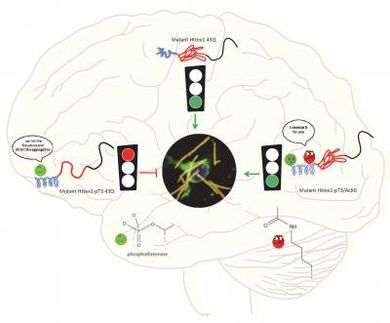How plants fine tune their natural chemical defenses
Advertisement
Even closely related plants produce their own natural chemical cocktails, each set uniquely adapted to the individual plant's specific habitat. Comparing anti-fungals produced by tobacco and henbane, researchers at the Salk Institute for Biological Studies discovered that only a few mutations in a key enzyme are enough to shift the whole output to an entirely new product mixture. Making fewer changes led to a mixture of henbane and tobacco-specific molecules and even so-called "chemical hybrids," explaining how plants can tinker with their natural chemical factories and adjust their product line to a changing environment without shutting down intracellular chemical factories completely.
The findings not only gave the Salk scientists a glimpse of the plants' evolutionary past, but may help them fine-tune the production of natural and environmentally friendly fungicides and pesticides as well as new flavors and fragrances by turning "enzymatic knobs" in the right direction.
"Most people are familiar with the word biodiversity, but 'chemodiversity,' — the extraordinary tapestry of natural chemicals found in plants — is just as important for life, the appearance of new species and the survival of many different ecosystems on the earth," says Howard Hughes Medical Institute investigator Joseph P. Noel, Ph.D, director of the Jack H. Skirball Center for Chemical Biology and Proteomics, who led the study, published in Nature Chemical Biology. "Understanding the chemistry and evolutionary principles that underlie this extraordinary biological diversity will show us how to alter biosynthetic pathways to equip crops with natural and environmentally friendly defenses against pests and diseases, to produce new pharmaceuticals, to enhance levels of naturally occurring health-promoting nutrients or to speed up plant adaptation in the face of global climatic change," hopes Noel.
For the current study, postdoctoral researcher and first author Paul O'Maille, Ph.D., probed the metabolic pathways that members of the nightshade family, which includes tobacco, tomatoes, potatoes, peppers and henbane, use to produce terpenes. Henbane (Hyoscyamus muticus) and tobacco (Nicotiana tabacum) each rely on a different phytoalexin to successfully defend themselves against fungi typical for their habitat. Yet the more than 500 amino acids that make up the chemical factories in each — known as sesquiterpene synthases — are nearly identical to each other, with very minor differences accumulated over approximately several million years of evolutionary change. Using structural analyses, O'Maille and his colleagues had earlier discovered that changing only 9 of the 550 amino acids shifts the production from tobacco-specific phytoalexins to the henbane versions and vice versa.
This time, they were trying to understand the many possible roads that cross the evolutionary divide between tobacco and henbane sesquiterpene synthases. O'Maille created a gene library that encoded all possible amino acid combinations, 512 in total, and produced and analyzed the mutant proteins, paying specific attention to the chemical output and efficiency of each enzyme. "This was the first systematic effort to link DNA sequence variation with chemical complexity," says O'Maille.























































